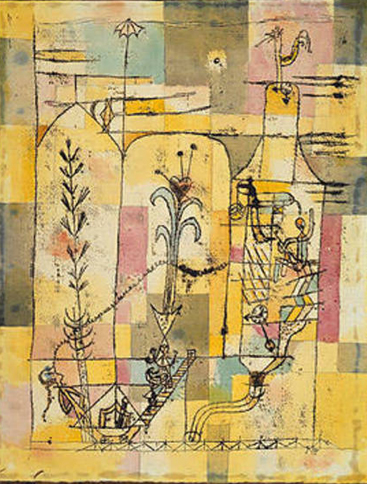The Paul Klee collection from New York on show at the Tate Gallery.
IN THE restaurant run by my father, the fattest man in Switzerland,' Paul Klee remembered in his auto-biography, 'were tables topped with polished marble in slabs, whose surface displayed a maze of petrified layers. In this labyrinth of lines one could pick out human grotesques and capture them with a pencil. I was fascinated with this pastime; my bent for the bizarre announced itself (nine years).'
In 'Paul Klee' at the Tate Gallery the artist's bent for the bizarre announces itself in Pierrot's Persecution Mania, 1924. A barrel-chested doodle of a clown is pursued across ghostly towers and stairways by a car-toon maenad in a tutu. Stranded between one castellation and another, he is, clearly, about to plummet to earth (just beneath his feet Klee has drawn a thick black arrow, pointing downwards, to indicate his fate) but he hovers for a moment, hopelessly defying gravity like Wile E. Coyote over the Grand Canyon.
Oddity prevails in Klee's universe. In another watercolour, a man - the title tells you he is a ventriloquist - walks the gangplank in a landscape of chequerboard abstraction, his see-through body filled with odd, writhing biomorphs. In Memory of an All-Girl Jazz Band memorialises the Jazz Age by depicting a Surrealis-tic trio of musically inclined furies; rendered in Klee's characteristic smudgy, spider-gone-walkabout line, they look as though they have been drawn in smoke.
Klee's bizarreness naturally endeared him to the Dadaists and, subsequently, the Surrealists, but over the years it has counted against him too. He has been remembered as an influential but incorrigibly slight figure, a cartoon modernist who indulged the least whim of his antic imagination. He compounded the sup-posed felony of eccentricity by working mostly on a...


